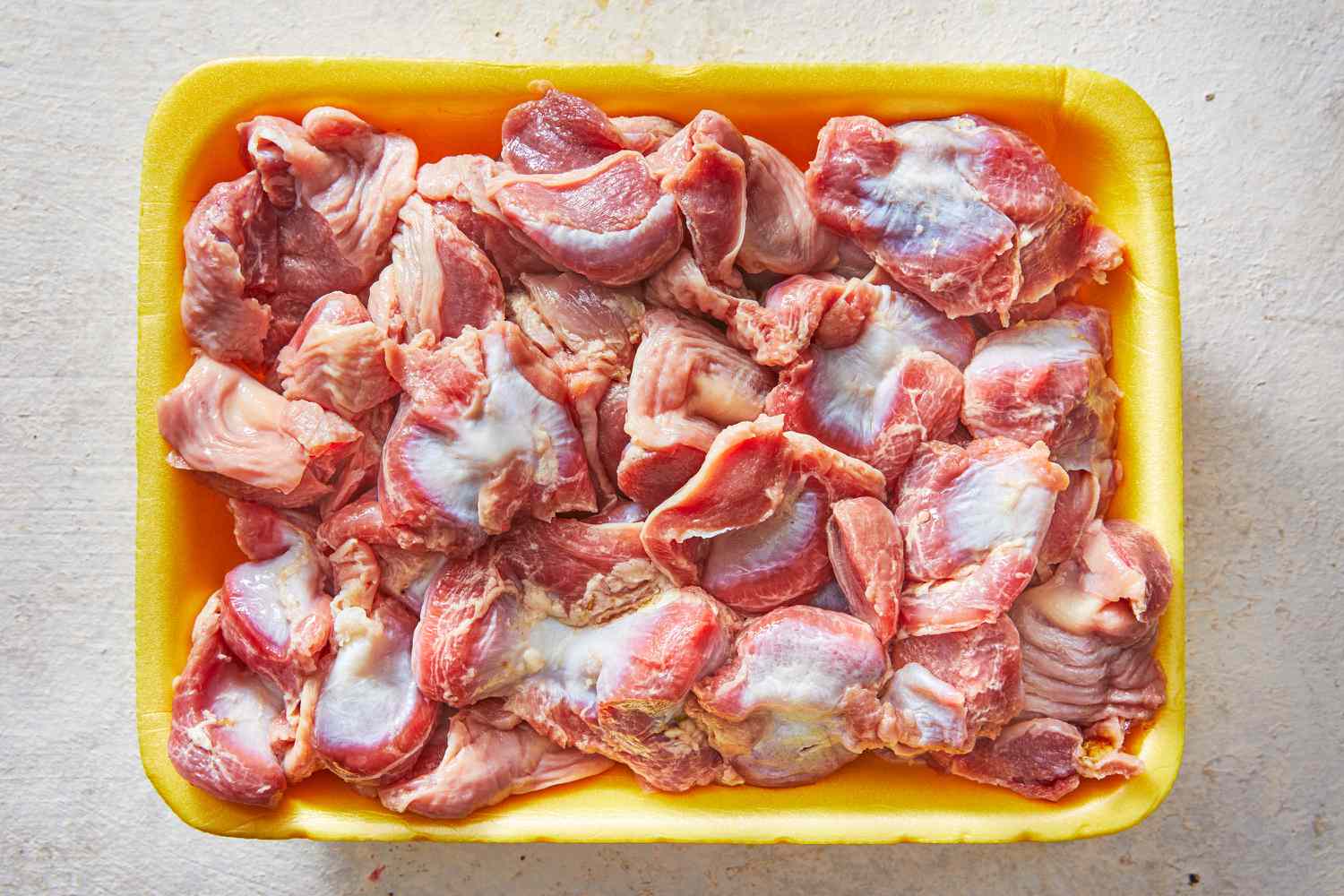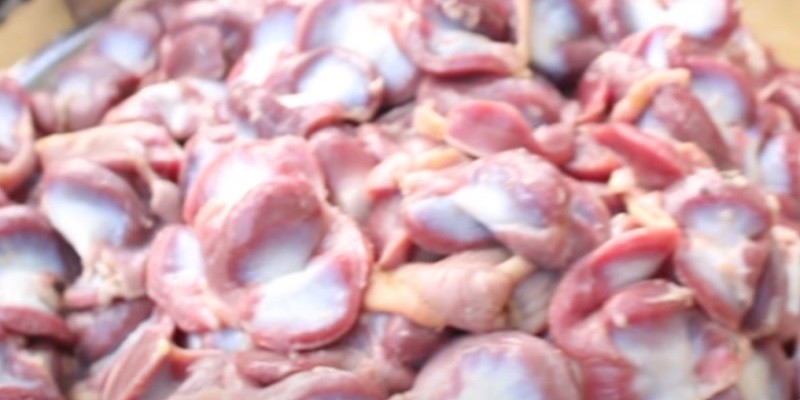Yes, dogs can safely eat chicken gizzards. They are a nutritious and affordable source of protein for dogs.
Dogs are not only man’s best friend, but they are also beloved members of our families. As responsible pet owners, we strive to provide them with a well-balanced diet to ensure their overall health and wellbeing. While commercial dog food offers convenience, many pet owners are also interested in incorporating other fresh ingredients into their canine companion’s diet.
One such food item is chicken gizzards. Known for their chewy texture and rich flavor, chicken gizzards are packed with essential nutrients that dogs can benefit from. We will explore the potential benefits and considerations when feeding chicken gizzards to our four-legged friends. So, can dogs eat chicken gizzards? Let’s find out.
Benefits Of Including Chicken Gizzards In A Dog’s Diet
Chicken gizzards can be a beneficial addition to a dog’s diet as they are packed with essential nutrients like protein, vitamins, and minerals. These nutritious organ meats can contribute to overall health, support muscle growth, and promote a strong immune system in dogs.
When it comes to providing a balanced and nutritious diet for your furry friend, it’s important to consider all the options available. While traditional dog food formulas may contain a variety of nutrients, incorporating fresh and natural ingredients into their meals can offer additional benefits. One such ingredient that can have a positive impact on your dog’s overall health is chicken gizzards. Rich in essential nutrients, high in protein content, and a good source of vitamins and minerals, including chicken gizzards in your dog’s diet can help support their well-being.
Rich In Essential Nutrients
Chicken gizzards are packed with essential nutrients that can contribute to your dog’s overall health and vitality. These nutrient-dense organ meats are high in B vitamins, such as niacin, riboflavin, and B12, which play a vital role in maintaining your dog’s metabolic functions. These vitamins help convert food into energy, support the nervous system, and aid in the production of red blood cells.
High Protein Content
Protein is an essential macronutrient for dogs as it plays a crucial role in maintaining their muscle mass, promoting healthy growth, and supporting a strong immune system. Chicken gizzards are an excellent source of protein, providing your dog with the building blocks they need for optimal health and development. The high protein content in chicken gizzards can also help ensure that your dog feels satisfied after a meal, reducing the likelihood of overeating and potential weight management issues.
Good Source Of Vitamins And Minerals
In addition to being rich in B vitamins, chicken gizzards are also a good source of other essential vitamins and minerals. These organ meats contain iron, zinc, and selenium, which are important for supporting your dog’s immune system, promoting healthy skin and coat, and aiding in proper cell function. They also contain trace minerals like copper, which is necessary for the formation of connective tissues and bone health.
Furthermore, chicken gizzards are a natural source of taurine, an amino acid that is vital for heart health in dogs. Taurine deficiency can lead to serious heart conditions, making it crucial to ensure your dog’s diet includes adequate amounts of this essential nutrient.
When considering adding chicken gizzards to your dog’s diet, it is important to consult with your veterinarian to determine the appropriate portion size and frequency. Additionally, it’s important to properly cook the gizzards to eliminate any potential bacteria that could be harmful to your dog’s health.
By including chicken gizzards in your dog’s diet, you are offering them a wholesome and nutrient-rich addition that can benefit their overall well-being. Just make sure to introduce new foods gradually and monitor your dog’s response to ensure they are tolerating the gizzards well. With a balanced and varied diet, your furry companion can thrive and enjoy a healthy and happy life.

Credit: recipes.net
Potential Risks Of Feeding Chicken Gizzards To Dogs
Chicken gizzards can pose potential risks to dogs. It’s important to note that gizzards can be difficult for some dogs to digest and may lead to gastrointestinal issues if fed in large quantities. Monitoring portion sizes and consulting with a veterinarian is recommended when considering adding chicken gizzards to a dog’s diet.
Risk Of Digestive Issues
Feeding chicken gizzards to dogs can pose potential risks, especially when it comes to their digestive system. While dogs are generally able to digest meat and animal products, gizzards are known to be a tough and fibrous muscular organ. This means that they may be difficult for some dogs to break down and digest fully.
When dogs are unable to properly digest food, it can lead to gastrointestinal issues such as diarrhea, vomiting, and constipation. This is why it’s important to monitor your dog after feeding them chicken gizzards, especially if it’s their first time consuming this particular organ meat.
Possibility Of Choking Hazard
Another potential risk of feeding chicken gizzards to dogs is the possibility of a choking hazard. Gizzards can be quite tough and have a dense texture, making them more challenging for dogs to chew and swallow.
If a dog doesn’t chew the gizzard thoroughly or if the gizzard is too large for their throat, it can become lodged and obstruct their airway. This can be a life-threatening situation requiring immediate veterinary intervention. Therefore, it’s crucial to ensure that the gizzards are cut into appropriately sized pieces that your dog can safely handle.
Potential Allergic Reactions
In some cases, dogs may have allergic reactions to certain types of food, including chicken gizzards. Symptoms of an allergic reaction can vary from mild to severe and may include itching, rashes, swelling, and difficulty breathing.
If you suspect that your dog has a food allergy, it’s important to consult your veterinarian before introducing chicken gizzards or any other new food into their diet. They can perform tests to determine what specific ingredients your dog may be allergic to and provide guidance on suitable alternatives.
Remember, always prioritize your dog’s health and well-being by being aware of the potential risks associated with feeding chicken gizzards. By considering the risks of digestive issues, the possibility of a choking hazard, and potential allergic reactions, you can make informed decisions about what to feed your furry friend.
Proper Preparation And Feeding Guidelines For Chicken Gizzards
When it comes to feeding your furry friends, it’s important to ensure that the food you provide is safe and healthy for them. If you’re considering adding chicken gizzards to your dog’s diet, it’s essential to know how to properly prepare and feed them. In this article, we will discuss the cooking methods for chicken gizzards, portion sizes for dogs based on weight, and the gradual introduction of gizzards into the diet.
Cooking Methods For Chicken Gizzards
Before feeding chicken gizzards to your dog, it’s crucial to cook them thoroughly. This helps eliminate any harmful bacteria and makes them easier to digest. There are several cooking methods you can choose from:
- Boiling: Boiling chicken gizzards is one of the simplest ways to cook them. Place the gizzards in a pot of water and simmer for about 20-30 minutes until they are fully cooked. Make sure they are tender and easy to chew before serving them to your dog.
- Baking: If you prefer a more roasted flavor, you can bake chicken gizzards in the oven. Preheat the oven to 350°F (175°C). Spread the gizzards on a baking tray and cook for about 25-35 minutes, or until they are cooked through and slightly crispy.
- Grilling: For a smoky taste, you can grill chicken gizzards on a barbecue or indoor grill. Preheat the grill to medium heat and cook the gizzards for about 10-15 minutes. Ensure they reach an internal temperature of 165°F (74°C) to ensure they are fully cooked.
Portion Sizes For Dogs Based On Weight
The portion size of chicken gizzards for your dog depends on their weight. It’s essential to provide the right amount to meet their nutritional needs without overfeeding. Here is a general guideline:
| Weight Range (lbs) | Portion Size (gizzards) |
|---|---|
| 10-20 | 1-2 |
| 20-40 | 2-4 |
| 40-60 | 4-6 |
| 60+ | 6 or more |
Please note that these are general guidelines and may vary depending on your dog’s activity level, age, and overall health. It’s always best to consult with your veterinarian to determine the specific portion size that suits your dog’s needs.
Gradual Introduction Of Gizzards Into The Diet
When introducing chicken gizzards into your dog’s diet, it’s important to do it gradually. Start by adding a small amount of cooked gizzards to their regular food. Monitor how your dog responds to the new addition and watch for any signs of digestive upset or allergies.
If your dog tolerates the gizzards well, you can gradually increase the amount over time. However, always remember to maintain a balanced diet by incorporating other sources of protein, vegetables, and grains. A balanced diet ensures that your dog receives all the necessary nutrients for optimal health.
Frequently Asked Questions For Can Dogs Eat Chicken Gizzards?
Can Dogs Eat Chicken Gizzards?
Yes, dogs can eat chicken gizzards as they are a lean, protein-rich and nutritious meat option for them.
Are Chicken Gizzards Good For Dogs?
Yes, chicken gizzards are a good source of protein, iron, and essential vitamins for dogs.
How To Prepare Chicken Gizzards For Dogs?
To prepare chicken gizzards for dogs, boil them until fully cooked, remove excess fat, chop into small pieces, and mix with their regular dog food.
Can Dogs Eat Raw Chicken Gizzards?
Raw chicken gizzards may contain harmful bacteria, so it is recommended to cook them thoroughly before feeding them to dogs.
How Much Chicken Gizzards Can I Feed My Dog?
The amount of chicken gizzards depends on your dog’s size and weight, but generally, it is advisable to offer them as an occasional treat or supplement to their regular diet.
Are There Any Risks Associated With Feeding Chicken Gizzards To Dogs?
There may be a choking hazard if chicken gizzards are not cut into small pieces. Additionally, ensure they are cooked well to avoid any bacterial contamination.
Conclusion
To sum up, chicken gizzards can be a healthy and nutritious addition to your dog’s diet. Packed with essential nutrients and protein, they offer numerous health benefits for your furry friend. However, it is crucial to prepare them properly and feed in moderation to avoid any digestive issues.
Always consult with your vet before introducing any new food to your dog’s diet to ensure their well-being.
Last Updated on April 23, 2025 by Pauline G. Carter

